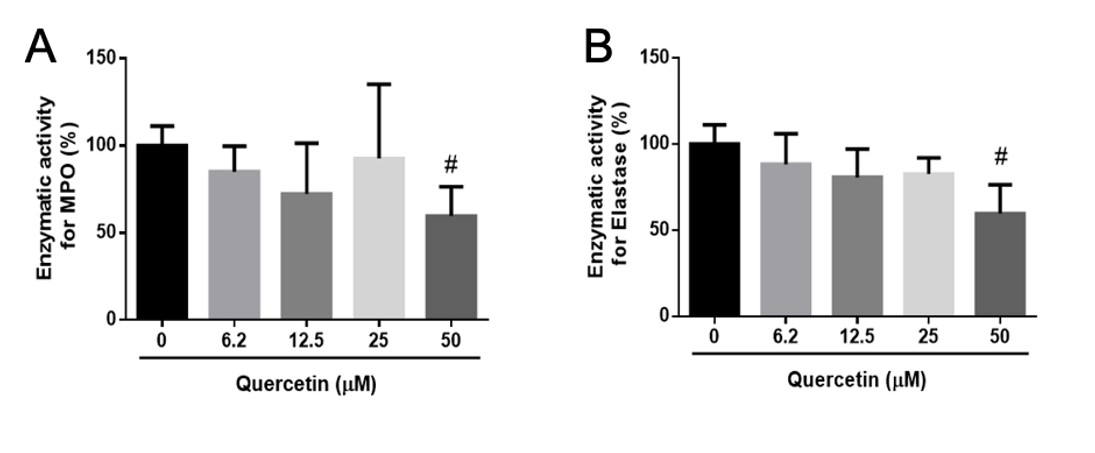Abstract
Neutrophil extracellular traps (NETs) were first reported as a microbicidal strategy for activated neutrophils. Through an immunologic response against several stimuli, neutrophils release their DNA together with proteins from granules, nucleus, and cytoplasm (e.g., elastase and myeloperoxidase). To date, NETs have been implicated in tissue damage during intense inflammatory processes, mainly when their release is dependent on oxygen radical generation. Flavonoids are antioxidant and anti-inflammatory agents; of these, quercetin is commonly found in our daily diet. Therefore, quercetin could exert some protective activity against tissue damage induced by NETs. In our in vitro assays, quercetin reduced NETs, myeloperoxidase (MPO), and elastase release from neutrophils stimulated with phorbol 12-myristate 13-acetate (PMA). The activity of these enzymes also decreased in the presence of quercetin. Quercetin also reduced the cytotoxic effect of NETs on alveolar cells (A549 cell line). Further, in silico assays indicated favorable interactions between quercetin and NET proteins (MPO and elastase). Overall, our results demonstrate that quercetin decreases deleterious cellular effects of NETs by reducing their release from activated neutrophils, and diminishing the enzymatic activity of MPO and elastase, possibly through direct interaction.
Keywords:
inflammation; damaged tissue; flavonoids; quercetin; myeloperoxidase; elastase

 Thumbnail
Thumbnail
 Thumbnail
Thumbnail
 Thumbnail
Thumbnail
 Thumbnail
Thumbnail
 Thumbnail
Thumbnail




